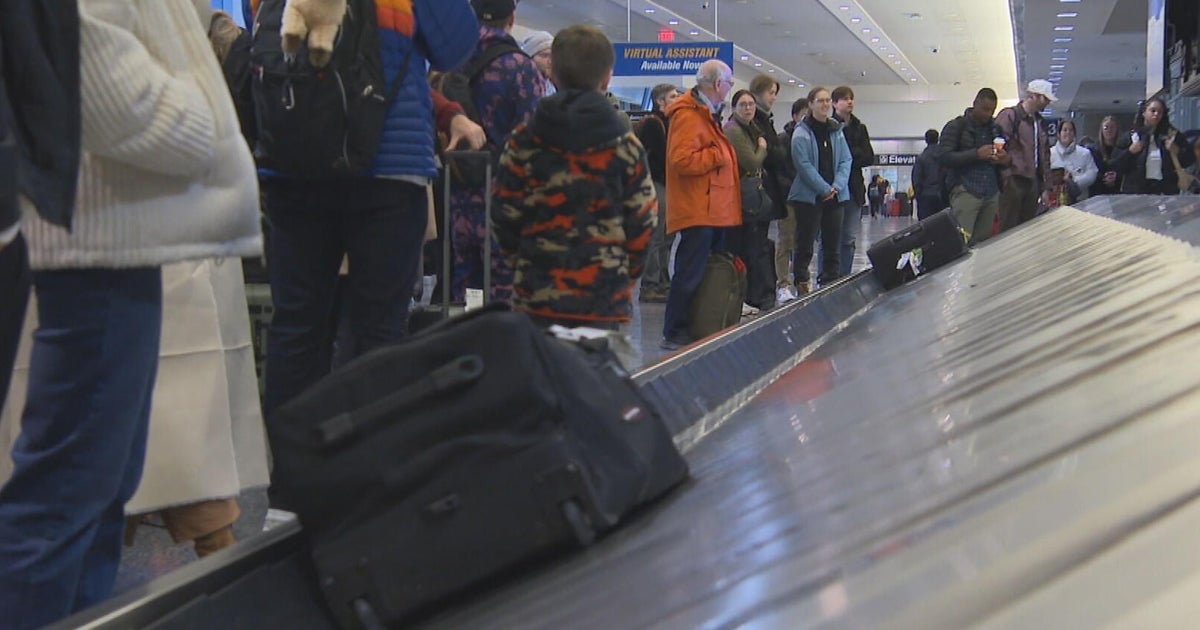Potentially Significant Winter Storms Tracking Toward New England
BOSTON (CBS) – You knew it was coming. It was only a matter of time before winter truly got started and the snow began to fly.
It has certainly been an unusual winter thus far with less than three inches of snow falling in December and January in Boston. Typically over the stretch of those two months Boston would average more than two feet of snow. So what's the deal?
Download: CBS Boston Weather App
Remember how cold it was last winter? In the first 8 days of January alone in 2014 Boston recorded five days with temperatures in the single digits. We ended up with nearly 22 inches of snow last January, on our way to a very big snow season that was well above average.
Check: Interactive Radar | Weather Blog | Current Conditions | Share Photos
What if I told you that it has been colder this January than last? It's true. Temperatures are more than a half degree colder this January than last January. So that must mean that it has been much drier this winter than last right? Wrong.
Check it out:
- December/January last winter: 7.86" precipitation
- December/January this winter: 8.25" precipitation and counting with 10 days still to go
A few weeks back I wrote a blog explaining the main reasons for the lack of snow in December. And even though our temperatures have gotten colder since then, the lack of snow still remains. While there are a seemingly endless set of atmospheric variables responsible for our current weather pattern, one thing has been very apparent this winter - the storm track has been very tight to the coastline due to a lack of atmospheric blocking in northern latitudes.
When storms track to our west or stay tight to the coastline, the cold air has no chance. Many times it can be stubborn to erode in places north and west of Boston and you get temperatures which hover very close to freezing and icy patches (similar to what just happened this past weekend). But your chances of getting any significant snow accumulation are very low without a significant and continuous source of cold air.
That cold air normally comes from Canada, thanks to strong high pressure to our north, pushing or draining it down into New England. We monitor something called the NAO, short for North Atlantic Oscillation, closely in the winter because it is vital for storms and snow in our area. In short, when it is negative and blocking is present, typically we get pelted by snow and cold.
So far this winter, this key ingredient has been missing. The NAO has been neutral or positive for quite some time.
So that's what HAS been happening. But things may be about to change in a big way.
A large ridge is starting to build over the eastern Pacific and the western United States. This ridge will become a monster player in our weather over the next few weeks. It will force a deep trough to form and stay in place in the east (including New England), meaning persistent cold and below average temperatures for at least the next few weeks. In addition to that, the jet stream is going to become very active and several storms appear to be in the pipeline in the days and weeks ahead.
Storm #1:
Timeframe - Wednesday night and early Thursday
Impact - Low
This is the first in a series of storms to dig a path from the midwest and head out into the Atlantic to our south. This will be the weakest of the bunch. We are only expecting some scattered coatings of snow in eastern Massachusetts. Over Cape Cod and particularly Nantucket (closer to the storm) there could be a few inches of accumulation.
Storm #2:
Timeframe - Saturday and Saturday Night
Impact - Potentially Moderate to High
A storm right out of the Gulf of Mexico will pass over the Carolinas late Friday and strengthen rapidly as it passes south of New England. There will likely be a lot of moisture with this one, but the track still needs to be worked out. Chances of a miss to the south are dwindling. It looks to be a significant, nor'easter type storm for most of Saturday afternoon and night. With a track closer to the coast there will be significant mixing with rain near the coast. A track farther offshore would mean more snow than rain, including Boston. There is the potential for 6 inches or more of heavy, wet snow with this event, along with some damaging winds near the coast and some minor coastal flooding.
Storm #3:
Timeframe - Monday Night and Tuesday
Impact - Potentially Moderate to High
Literally right on the heels of the weekend storm, another piece of energy will dive out of central Canada and undergo rapid development when it hits the waters off the East Coast. It is way too early for specifics on this storm, but models have been persistent in developing something in this timeframe. This would be the "coldest" storm of the three with perhaps the biggest snowfall potential over a larger area. Again, a lot is still to be decided with this storm.
There will be much more on the weekend storm coming up on Thursday. I expect in 24 hours we will be able to provide much more detail on a rain-snow line and snow amounts.
Buckle up, winter is just getting started.
Follow Terry on Twitter @TerryWBZ



